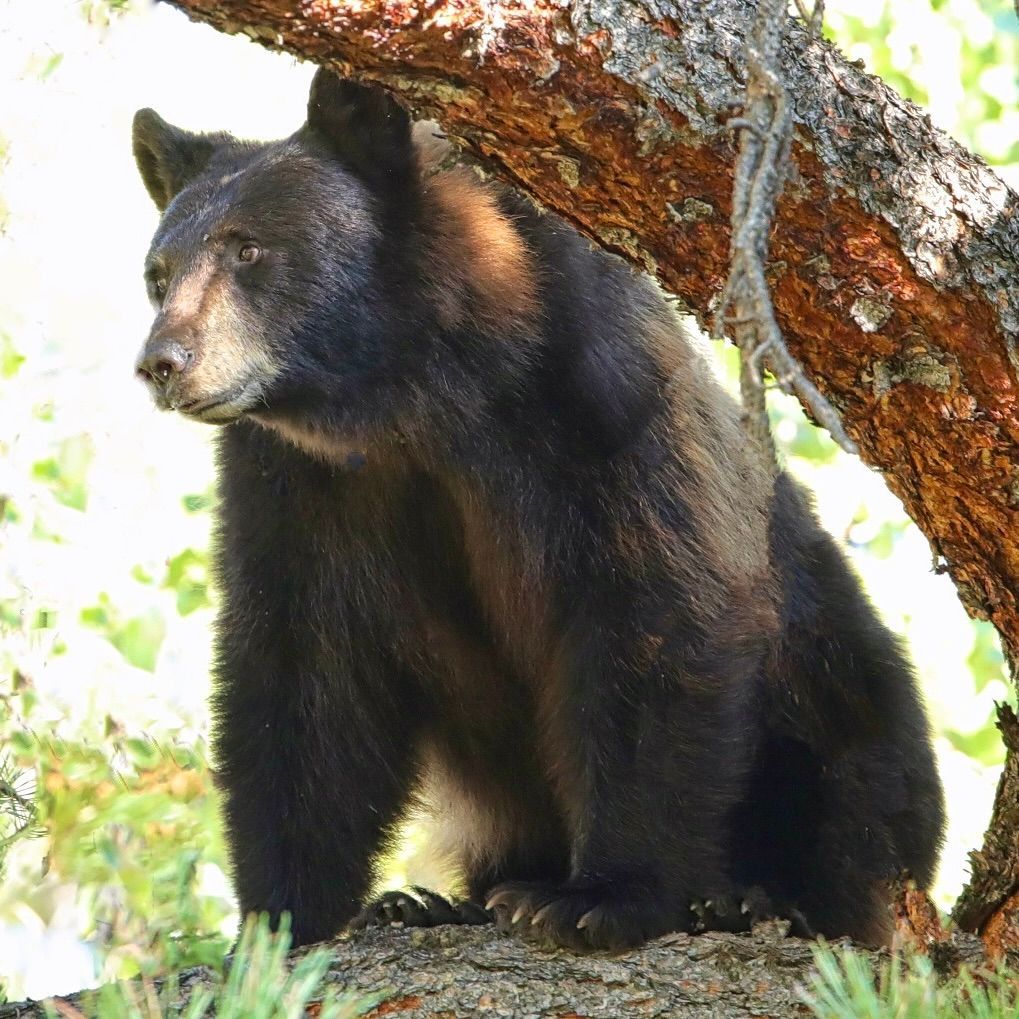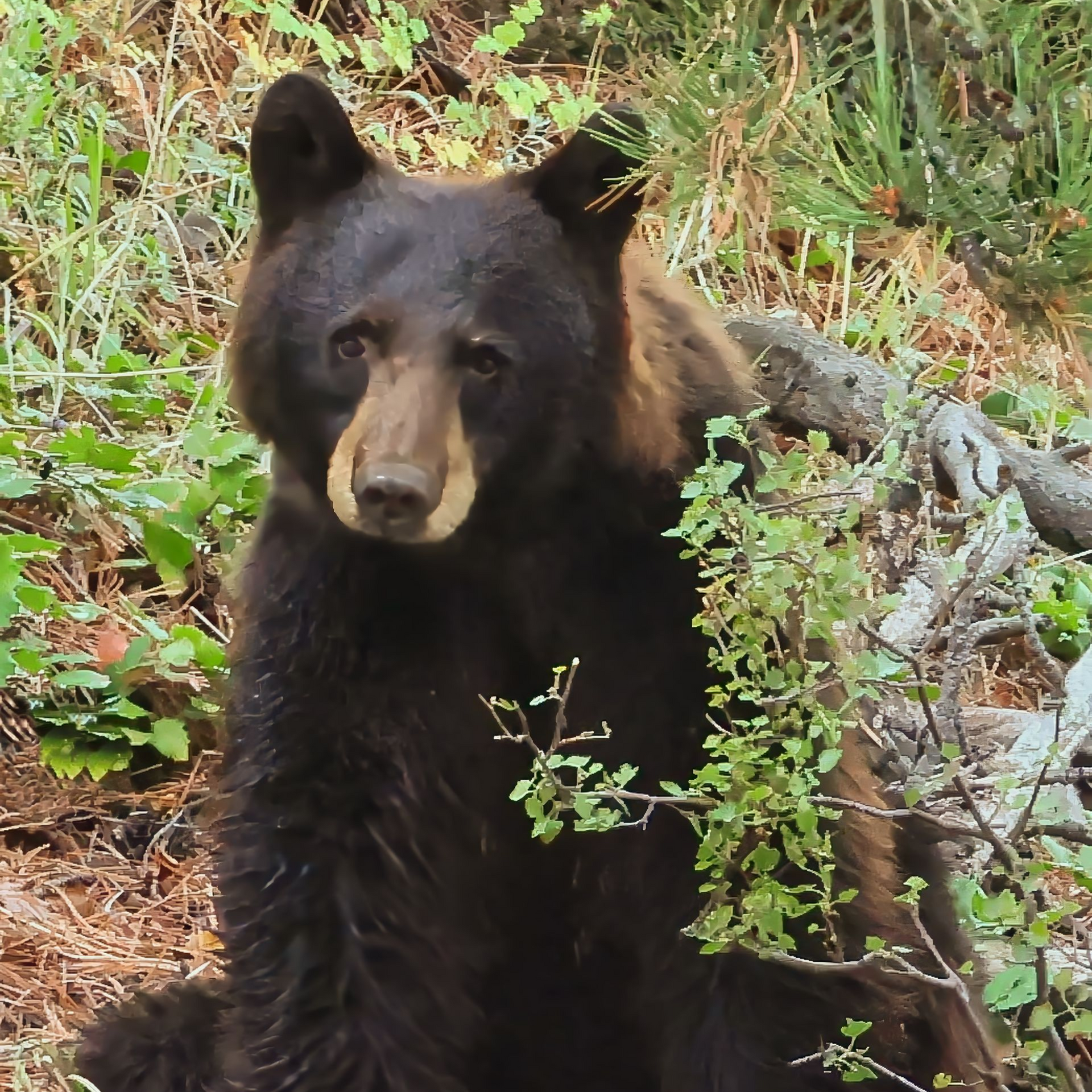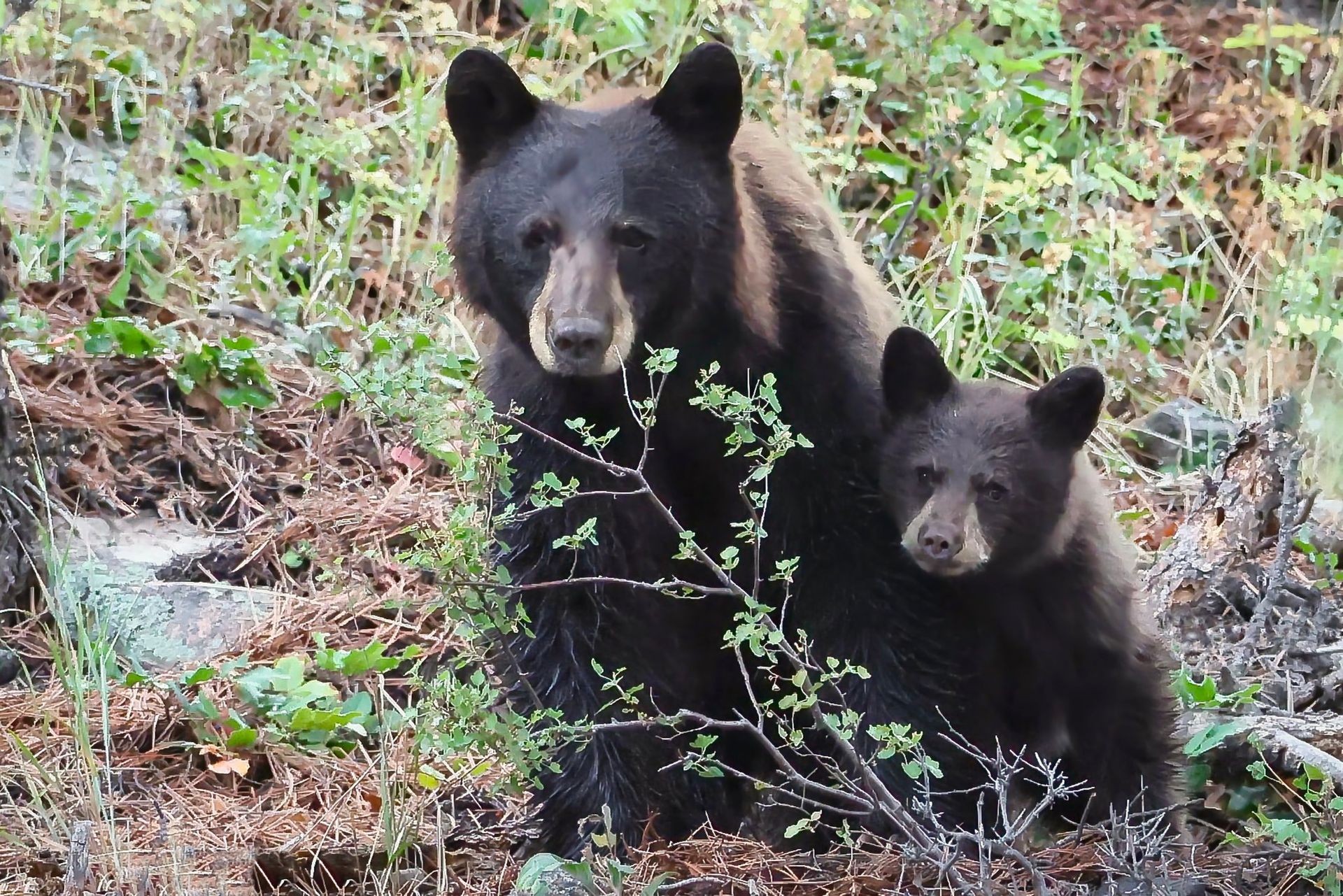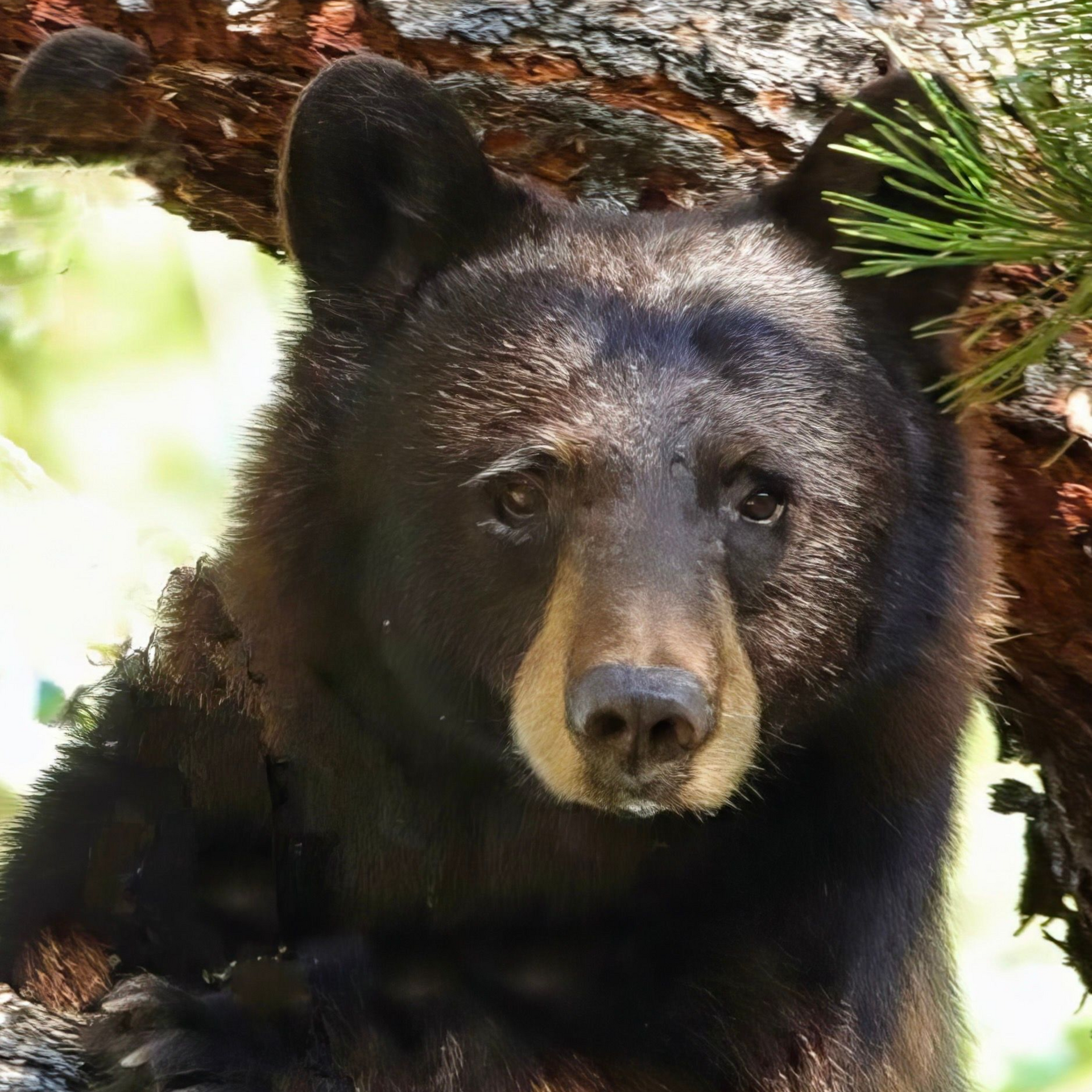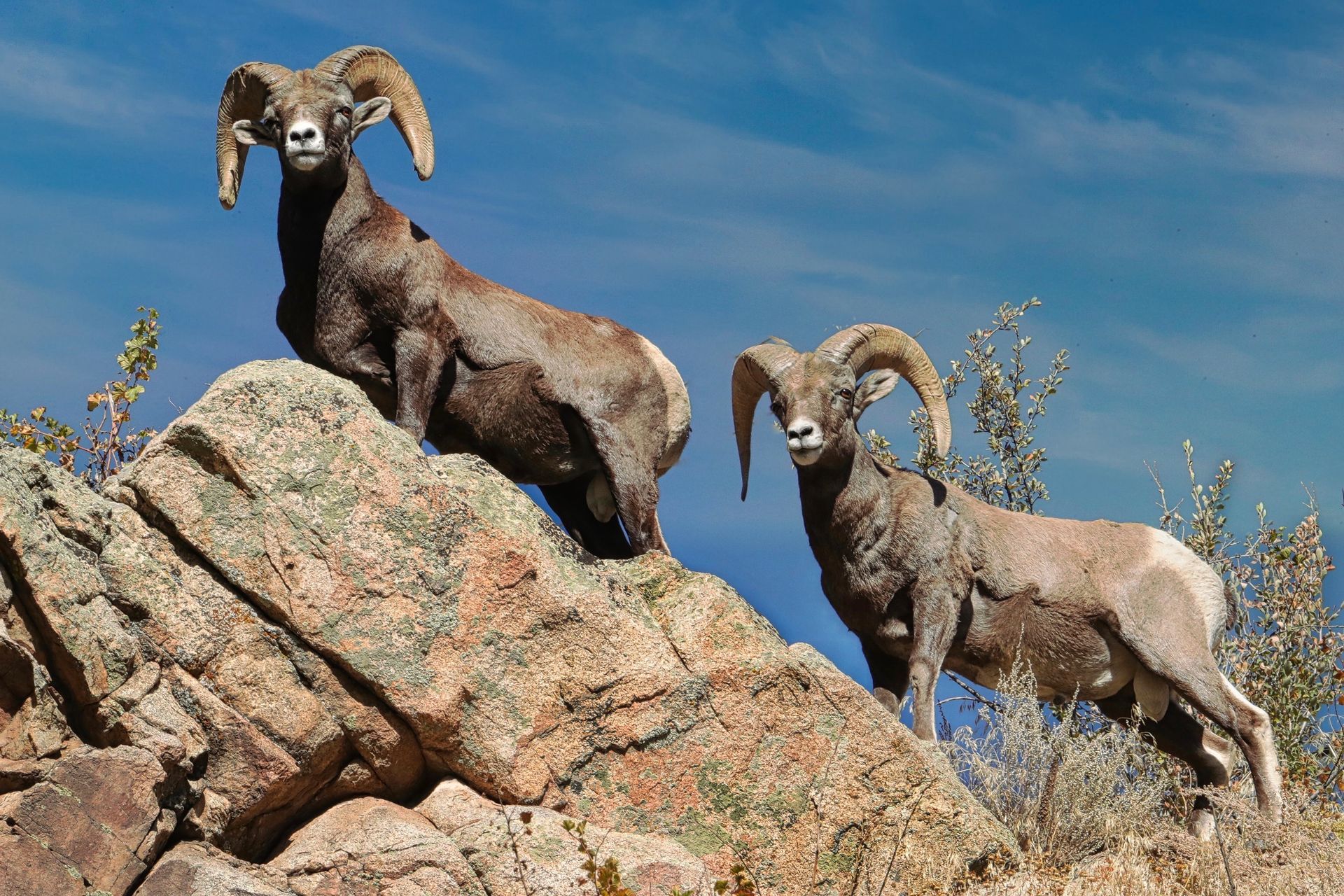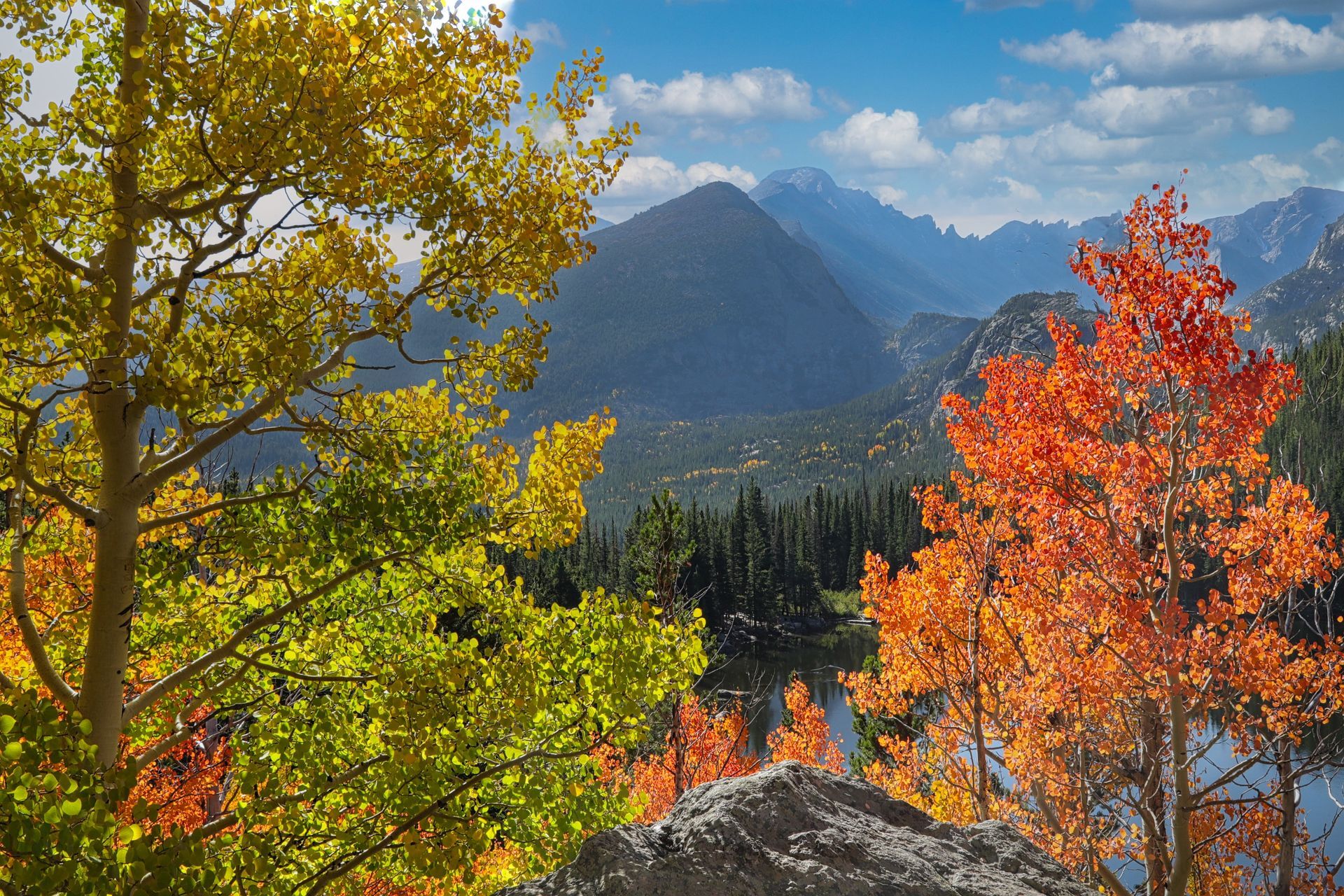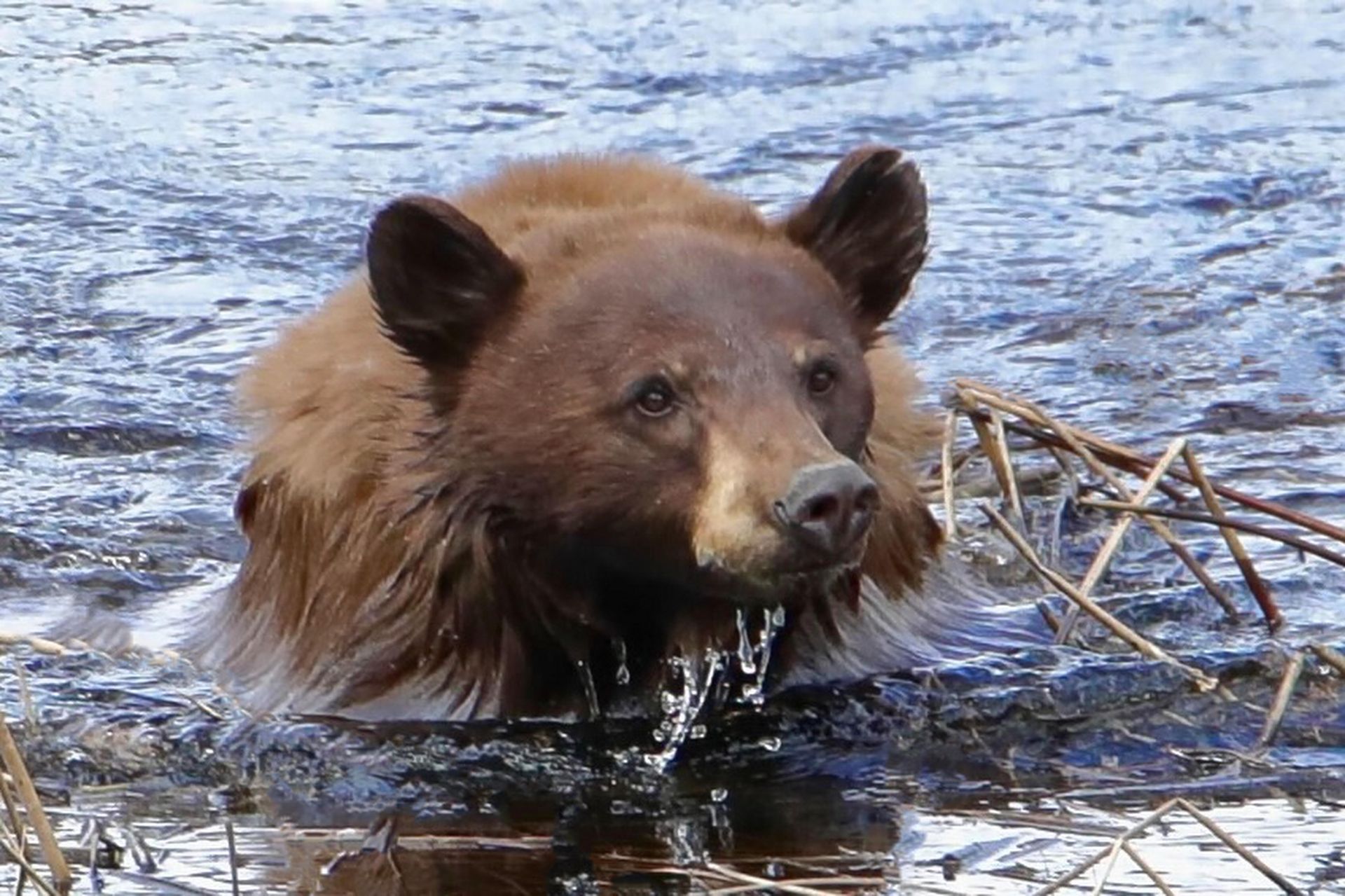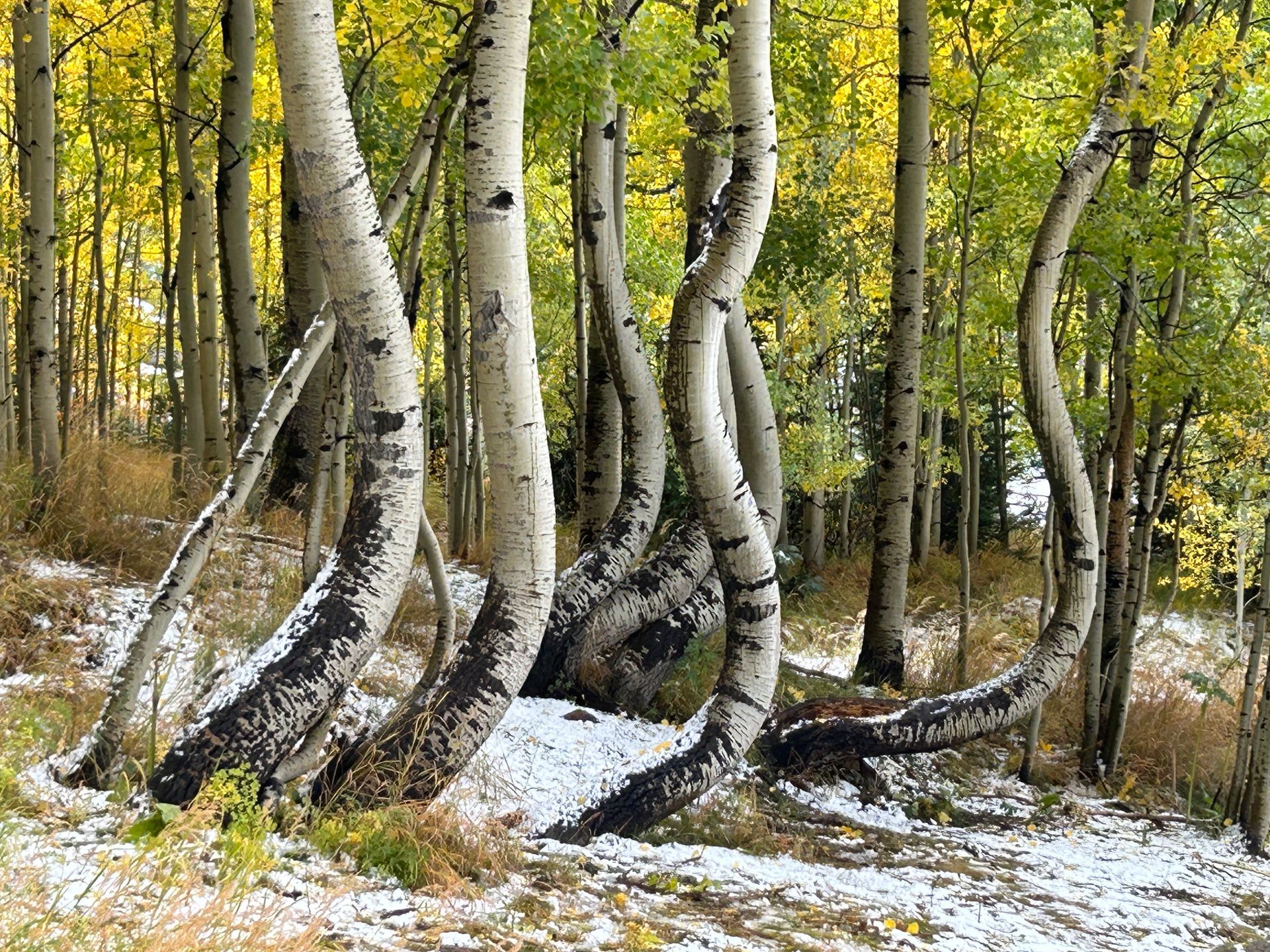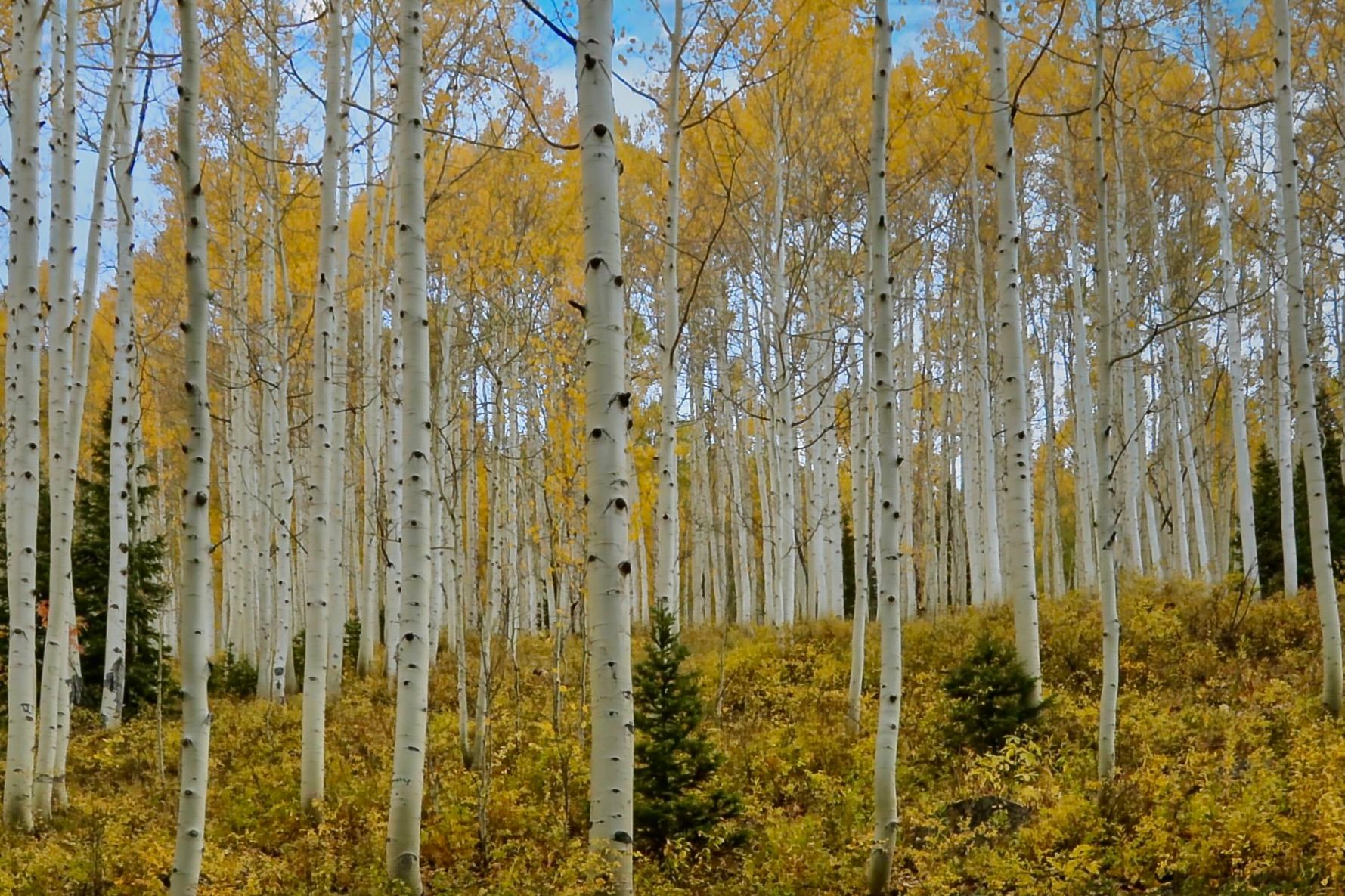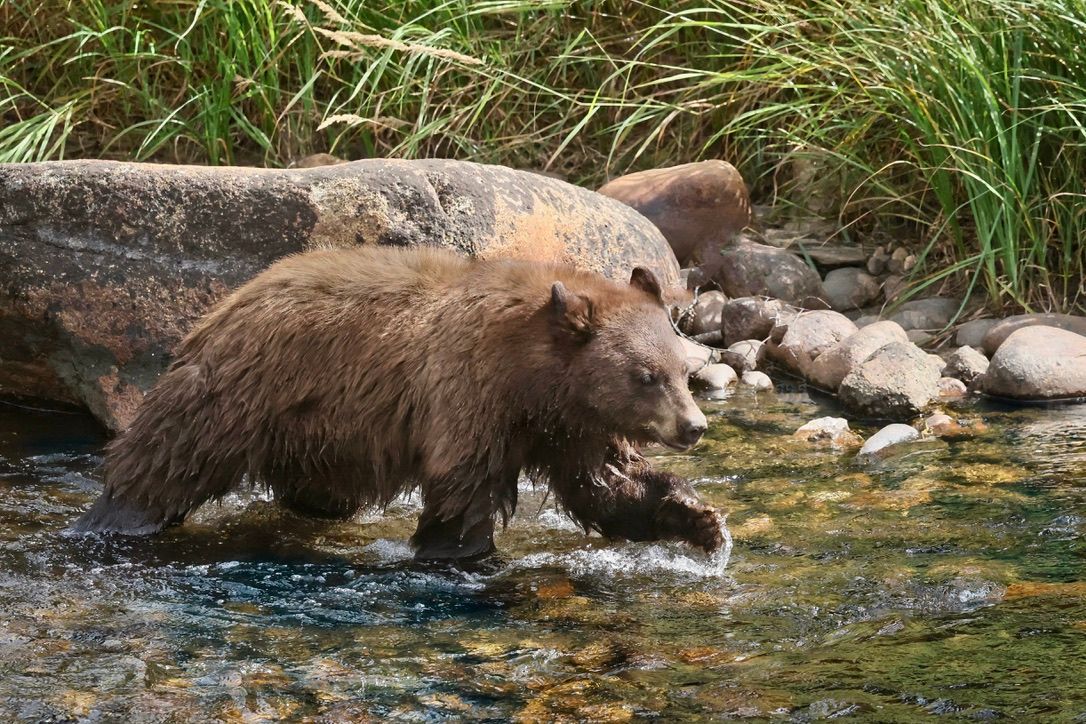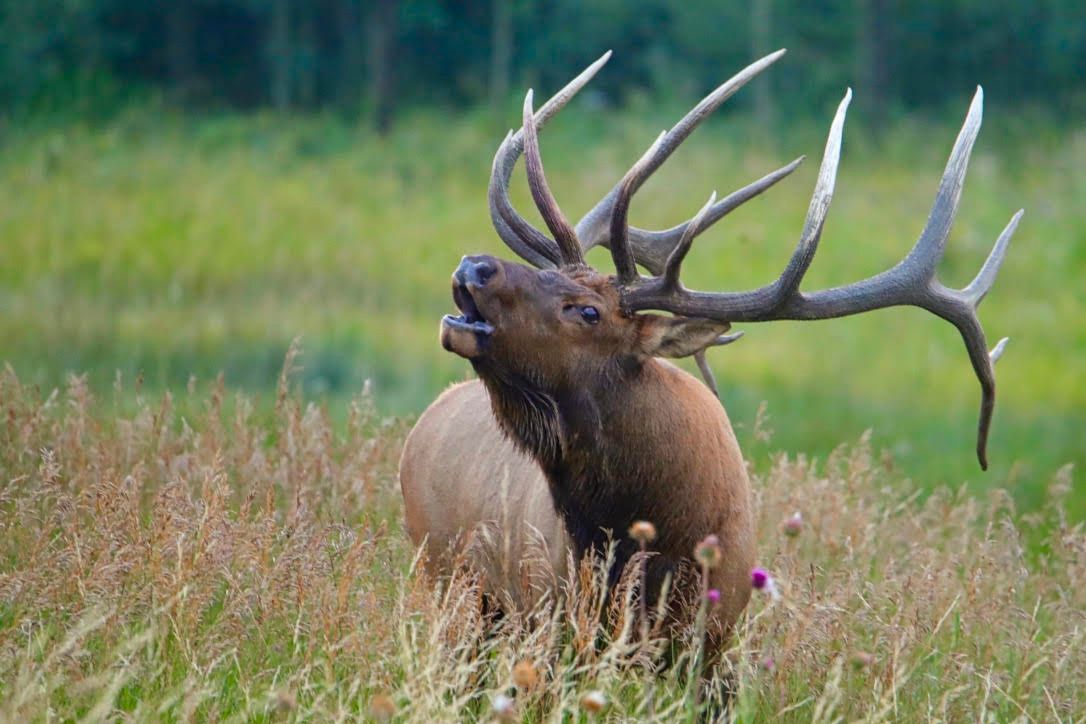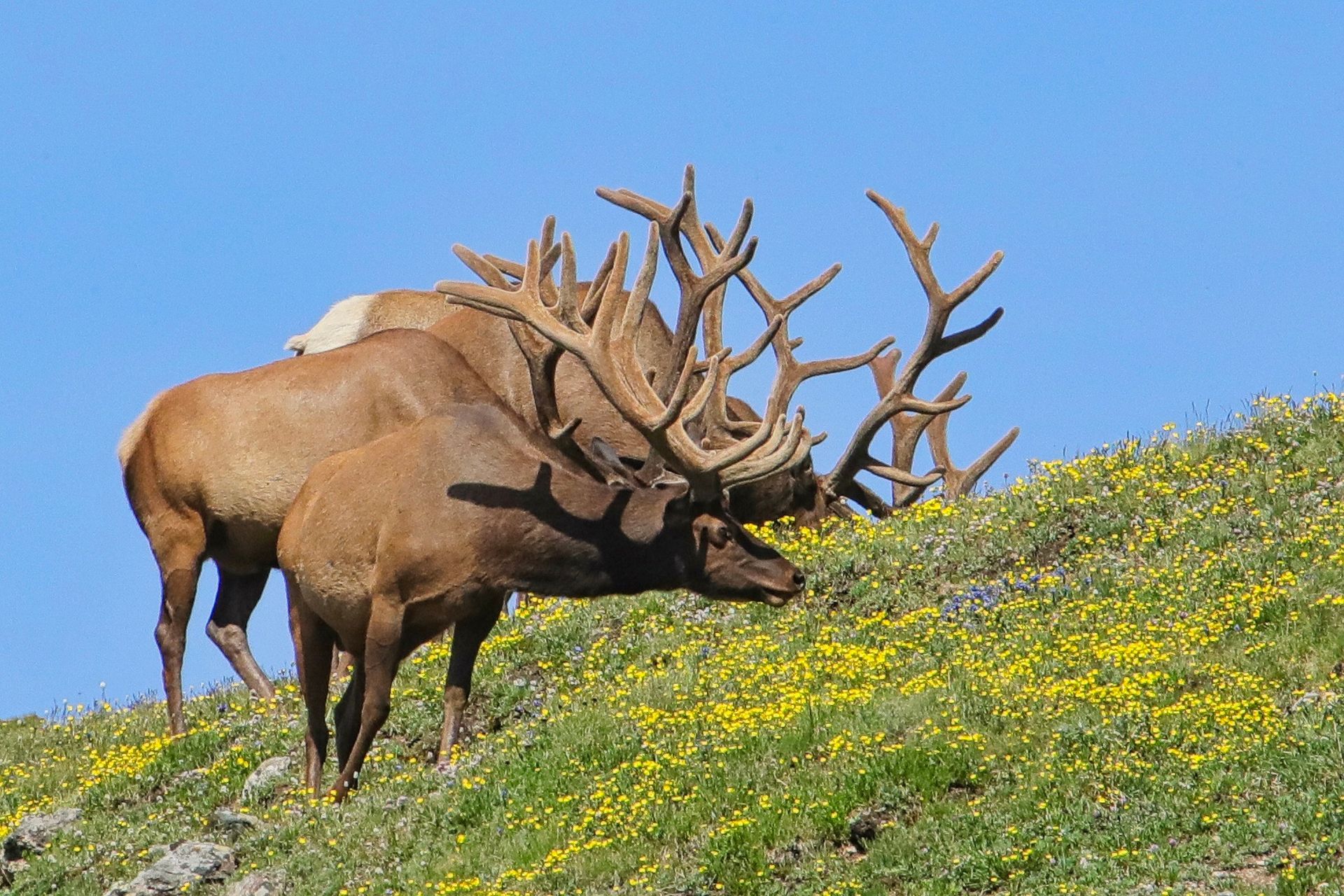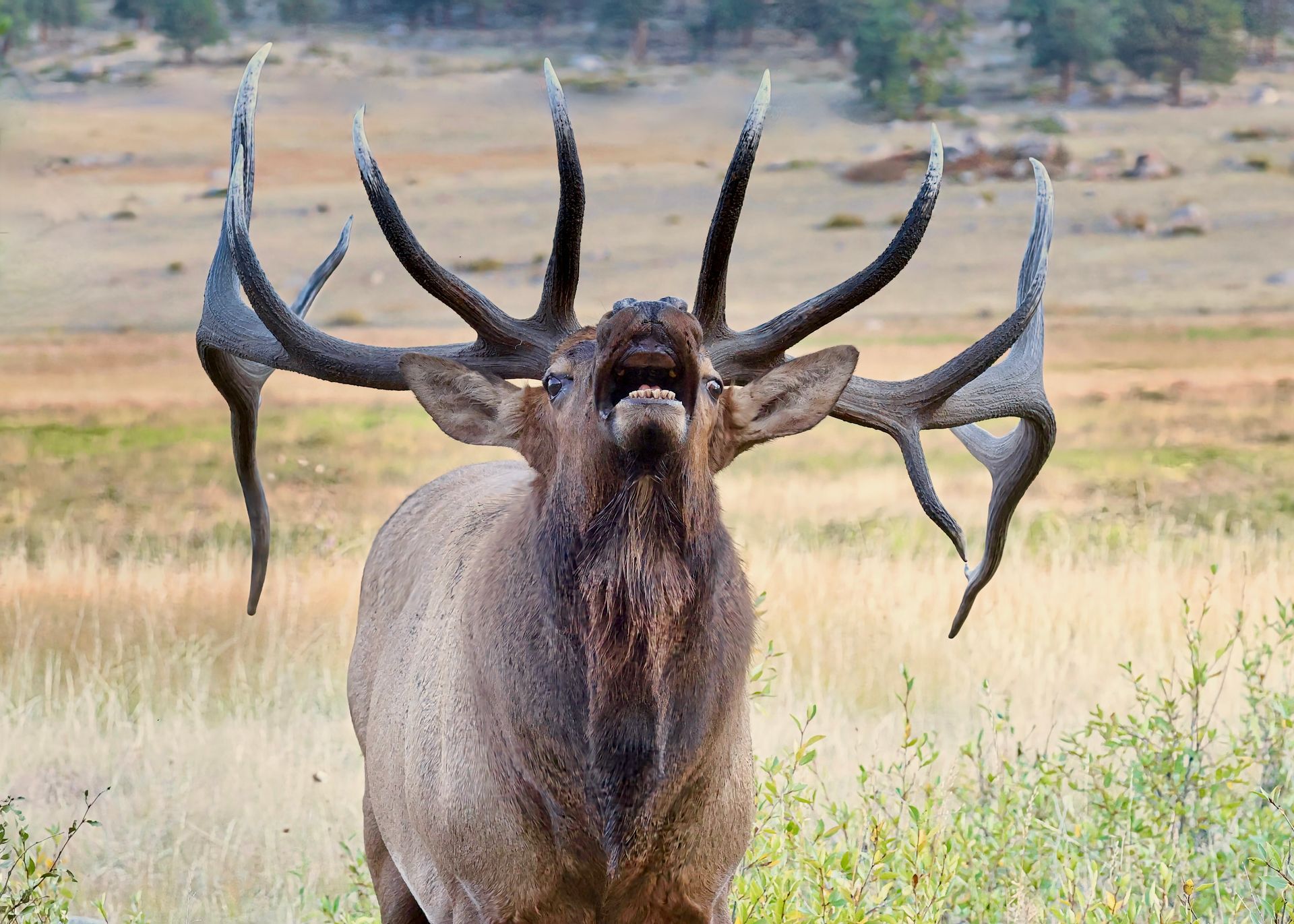Bear Deja Vu
Reddish Phase Black Bear Feasting on Chokecherries
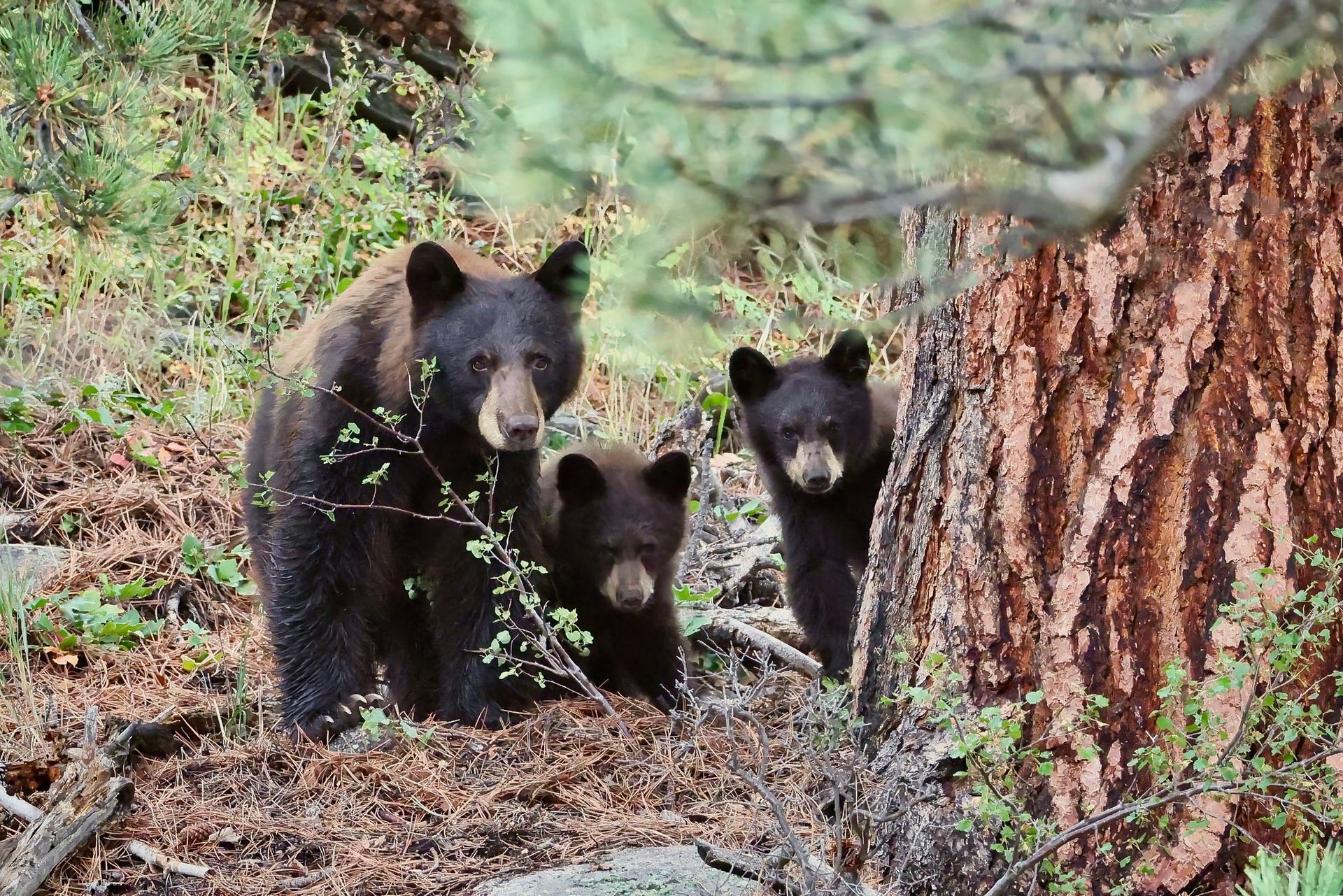
Black bears love chokecherries and with their powerful sense of smell they can detect the ripe fruit from miles away. One of the most notable shrubs in Rocky Mountain National Park, chokecherries are a leafy perennial that produce small, single-seeded fruits similar to a cherry. Ripe in the late summer and early fall, they are a bear’s favorite during hyperphagia. Hyperphagia is a natural time for bears when they overeat intensely to gain body fat before winter hibernation.
On August 30, 2022, I was in RMNP paying particular attention to areas where I knew there were chokecherries. Watching one particular hillside, among the greens and chokecherry berries, I saw a reddish-brown hump appearing and disappearing only to reappear as it moved through the shrubs.
Excited, I realized it was a reddish phase black bear feasting on the chokecherries. As I exited my car, watching the bear’s movement her head popped up, curious about the person down by the road. She watched me, and I watched her, my camera coming up. Then she began meandering away, disappearing among the thick brush.
I scanned the area, almost jumping when I saw them. High in a giant ponderosa pine, two cubs slept peacefully on parallel tree branches. Looking back to where I had seen the mother bear, she emerged on the edge of the foliage, moving to the tree. Climbing up, she stopped below the cubs. From there, she stood, reaching her paws over a branch, and stared at me as if to say, “No closer.” Respectfully, I obliged.
Fast forward to August 27, 2025, I was driving as I looked at the same band of chokecherries when a head appeared. Like a teddy bear on a bed, she looked reddish, soft, and fluffy feeding among the green leaves and red berries.
Then on the hill behind her, another, smaller bear…a cub running. The cub climbed onto a fallen tree, walking the beam like Simone Biles, and dismounted onto a bed of pine needles. I looked back to the mother bear where she sat upward and another cub appeared. Twins. Deju vu.
All three moved toward the same giant tree that on August 30, 2022, had been occupied by the black bear sow and her twins. I pulled my 600 mm prime lens from the back of my SUV, set up the tripod, and attached the camera. I moved up above the edge of the road, setting the camera in place and looked to find the bears once more.
Mother bear sat watching from the base of the ponderosa pine. Focusing the camera, I began to capture images from a significant distance away. She was calm, not moving. Light had begun to brighten her fur, the red highlighted to nearly blond. My shutter clicked silently as I captured the beautiful bear’s image.
I could feel it happening around me. Photographers, tourists, and people in awe of this special sighting began to gather. They knew my camera must be pointed at something, and as they saw the bear, the excitement in their whispers was evident. For the visitors, this would be the highlight of their vacation.
Then, seeing her coming head-first down the tree, I whispered, “A cub.” She was followed by the second cub, and as mom watched protectively, they began to play. Wrestling, tussling, tumbling, and falling on each other, the cubs were a delight. My camera was in action.
It was a unique and special moment in RMNP. With only an estimated thirty black bears in its 415 square mile land mass, spotting bears is rare. Photographing them at play was a moment a photographer dreamed of.
She was a beautiful and protective mother, watching us watch her as the cubs tumbled playfully behind her. Every now and then, curiosity would overcome their playfulness. The cubs would stop, stepping up beside their mother looking to see what she was watching.
That is when our cameras reacted, the mother and her cubs posing for pictures, smiling at the photographers. Portrait shots of a family on their best behavior. But that would only last a minute because bear cubs are like little kids. A small paw would reach for the other cub’s head, the other cub’s mouth opened as she reacted, and the tussle was back on.
Like kids, eventually, the cub’s play wore them out. They retreated up the tree to a large branch, sleeping protected. As they did, mother bear crossed her paws, laid her head on top, and began her own rest and recovery.
The cubs were safe, the people a good distance away, and she was weary. So at the bottom of the tree near the chokecherry shrubs, she slept. As she did, I stood from behind my camera, took a deep breath, and silently thanked her for sharing her family for just a bit of time.

